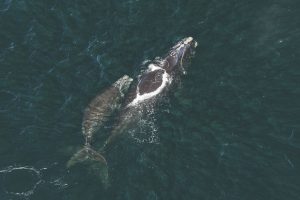
Wildlife
Punctuation’s mark: Can we save the critically endangered North Atlantic right whale?
After a series of mass deaths in recent years, what can we do?
- 4110 words
- 17 minutes
This article is over 5 years old and may contain outdated information.
Wildlife

NORTH PACIFIC HUMPBACK WHALE
Megaptera novaeangliae
SARA status: Threatened
Weight: 34 to 45 t
Length: 13 to 14 m
Offspring: 1 every 2 years
Lifespan: 50 years

Hunting humpback whales was easy. They’re creatures of habit, returning to the same coastal waters each year, and they’re known for making themselves conspicuous by frequently breaching, lunging and slapping the water’s surface with their large flukes and flippers.
When the International Whaling Commission ended unrestricted commercial whaling of the giants in 1965, the once-mighty North Pacific population had been reduced to fewer than 1,500 — between five and 10 per cent of their historic numbers. From 1908 to 1967, whalers took more than 5,600 humpbacks for their blubber, meat and bone in British Columbian waters alone.
Today, the North Pacific population of humpbacks is estimated at more than 20,000. Knowledge of those frequenting Canada’s Pacific Coast waters may be even less precise, though it’s thought the B.C. populations are now at least 2,145 whales strong.
Entanglement in fishing equipment, collisions with fast ships and the risk of oil spills from higher tanker traffic in coastal waters are among the most common ongoing threats to Canada’s Pacific humpbacks. Although the species is still classified as threatened under Canada’s Species at Risk Act, its steady recovery means that experts are suggesting downgrading its status to special concern.
The mark of a success story, certainly, but as John Ford, head of Fisheries and Oceans Canada’s cetacean research program explains, “that doesn’t mean ‘no concern.’ It means the recovery strategy that was developed will turn into a management plan, with many of the same efforts to monitor the population still in place.”
Are you passionate about Canadian geography?
You can support Canadian Geographic in 3 ways:

Wildlife
After a series of mass deaths in recent years, what can we do?

Wildlife
Are icebreakers ruining narwhals’ summer getaway? Plus, Montreal’s whale-ward minkes, Canada’s first North Atlantic right whale visit of the year, a new K pod baby, and humpback and orca continue to clash

Wildlife
An estimated annual $175-billion business, the illegal trade in wildlife is the world’s fourth-largest criminal enterprise. It stands to radically alter the animal kingdom.

Wildlife
Whales are beginning to return to B.C. waters — but will they find a safe haven?